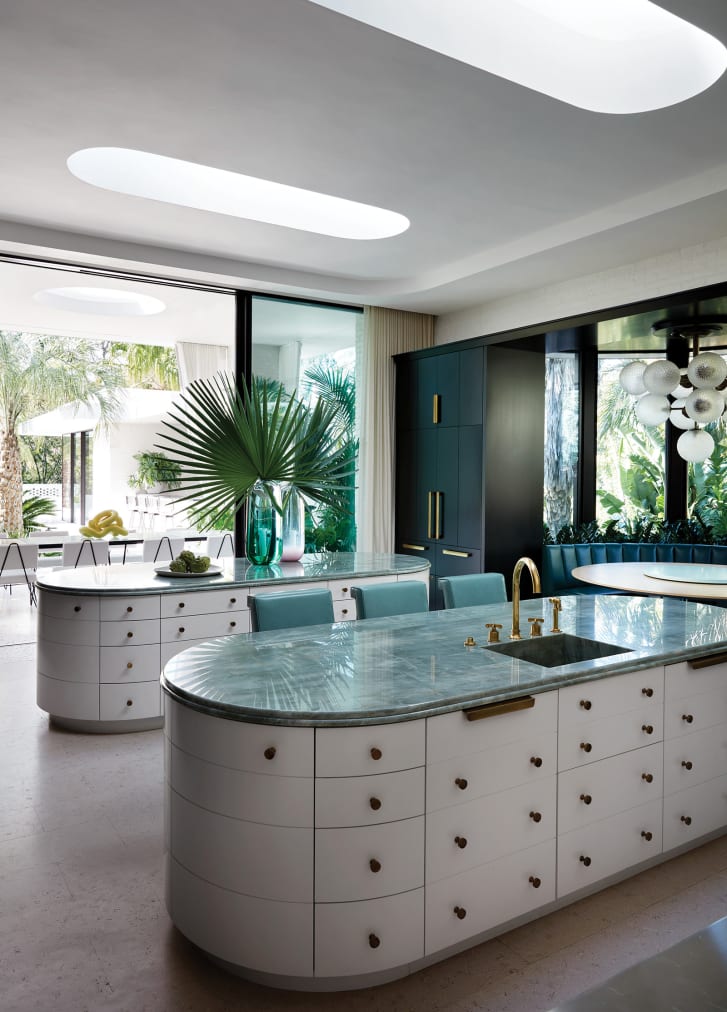Color-blocked rooms, floor-to-ceiling floral patterns and Sherle Wagner marble toilets aren’t obvious style touches for Hollywood’s modern high-end homes. But for one reimaging of a 1960s property, bland has been avoided at all costs, in favor of eccentric individualism.
“Call it anti-establishment taste,” Mary Kitchen told Architectural Digest when she invited the magazine into her Regency-style home in the Holmby Hills, Los Angeles for the July/August issue.
“These are things that most people wouldn’t want or would tear out of an old house,” the television presenter, model, and philanthropist said of the more unusual decorative choices including gilt-finished fixtures, Dorothy Draper cut velvets and bullion-fringed pool umbrellas. Mid-century materials such as vinyl, linoleum and cork were also incorporated. “I just love that it feels fun to me,” Kitchen added.

Designed by architect Caspar Ehmcke, the house was built in 1966. Kitchen and her husband bought the home from Maroon 5 singer Adam Levine and his wife, model Behati Prinsloo Levine, who stripped down the interior before deciding to sell the property.
Kitchen revealed how she didn’t want to adopt the current trend of subtle, soft minimalism. “I wasn’t looking for a cool mid-century house in the Hollywood Hills, with exquisitely tasteful interiors,” she said. “I didn’t want a house that looks like everyone else’s.”
To achieve this aim, she hired interior designer Jamie Bush, architect William Hefner, and landscape architect Raymond Jungles. The result is a mix of genres and eras: Fun yet sophisticated, retro blended with contemporary.

The team tried to imagine what the house might have looked like if it had “really exceptional period architecture,” according to Hefner. This meant working within the original footprint, flattening its pitched roof and adding corner windows and modern eaves.
In the living room, a Waterford crystal chandelier hangs above light pink sofas from Coup Studio, French 1960s armchairs, a cocktail table by Armand Jonckers and a 1970s brass banana-leaf sculpture. The kitchen is dominated by celadon and forest green hues, with skylights that mirror the shape of the islands below.
Tulip-patterned wallpaper and fabric dominates the bedrooms of Kitchen’s three young daughters — albeit in different color pallets. In one of the rooms, the pink, green and white floral pattern covers the walls, curtains, bedsheets and even the bed frame.
“Zoning the house by color allowed us to control the incredible variety of pieces and themes that Mary was drawn to, all these great things from far-flung periods and places. Once we established the rules, we were free to play within those boundaries,” Bush said.
He added: “The house is a glamorous throwback fantasy, but it’s also weirdly unfashionable. Mary pushed it in the most courageous way. Most people simply wouldn’t have the chutzpah.”
